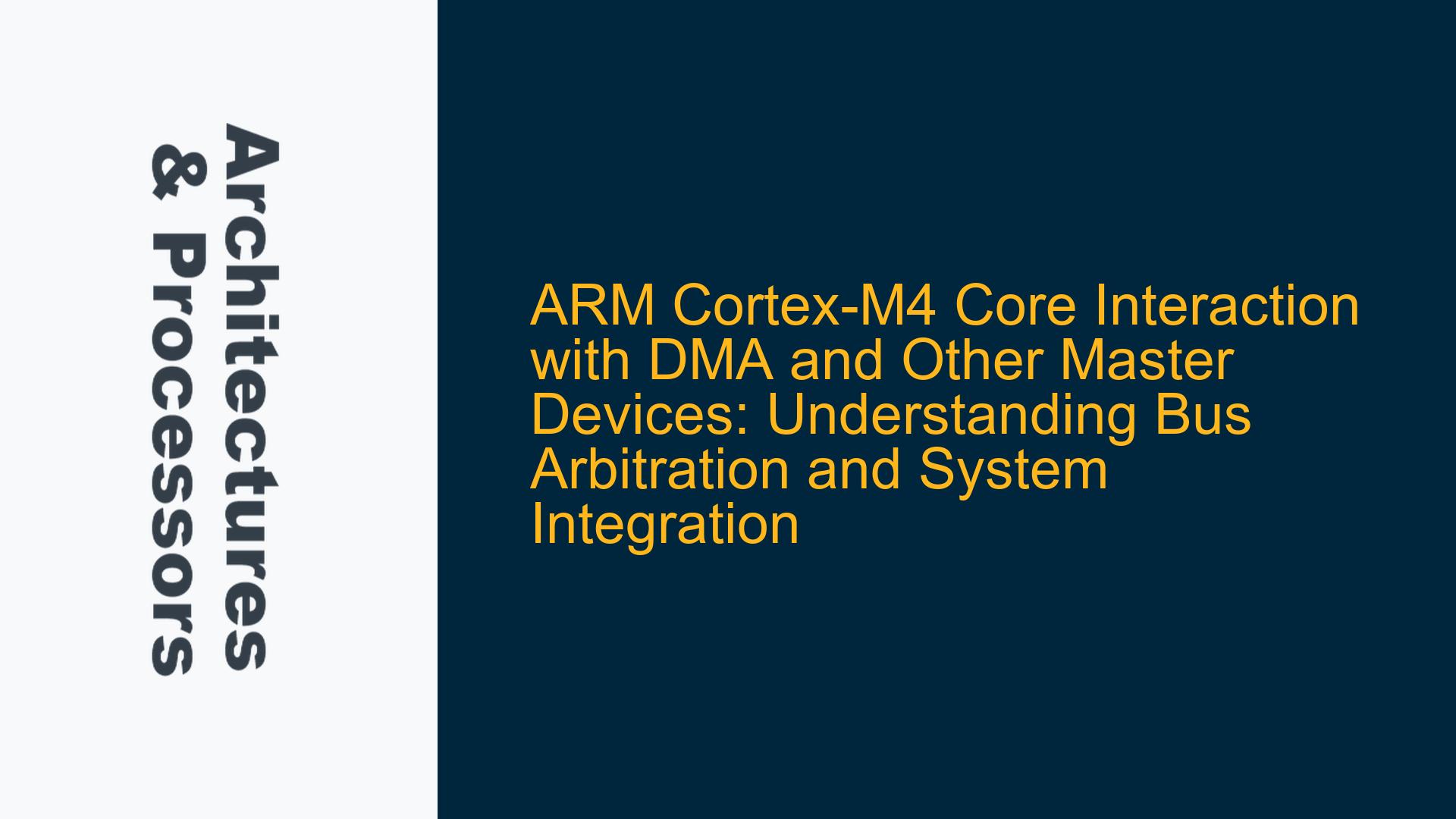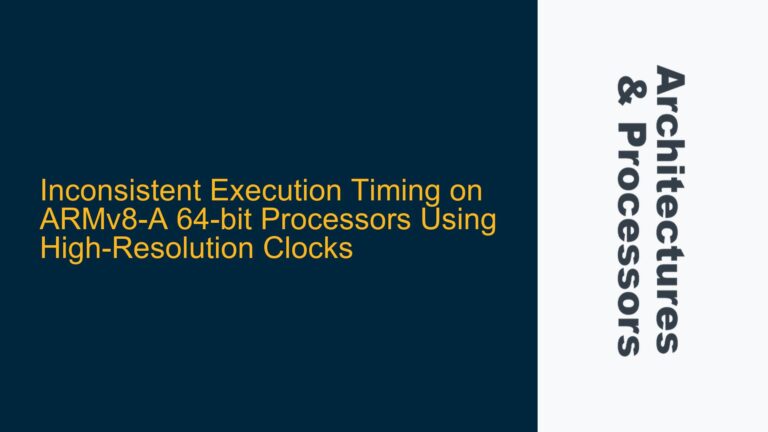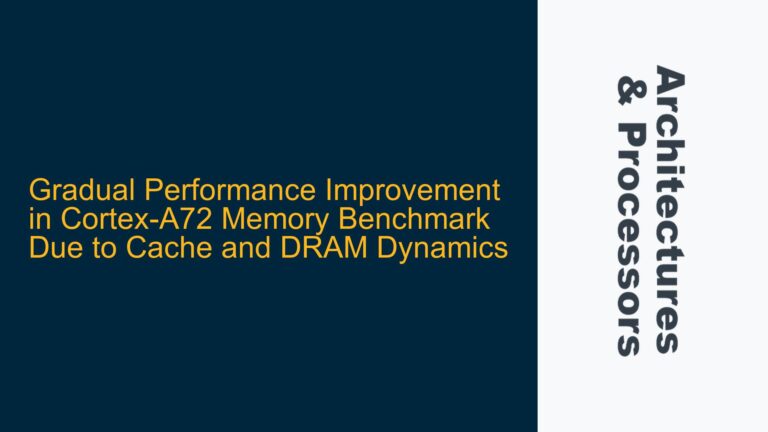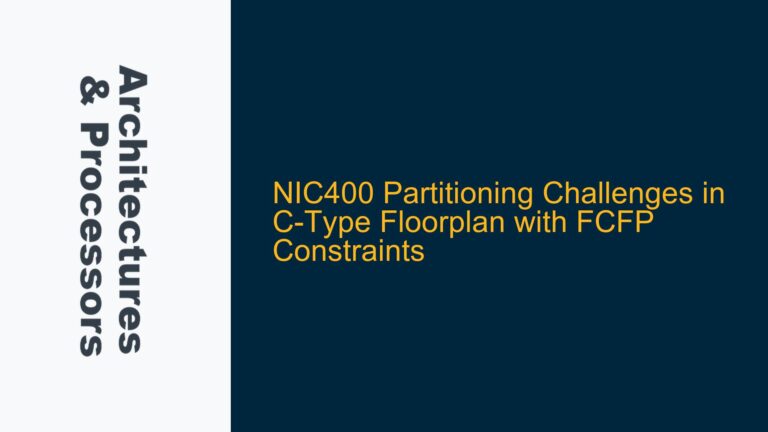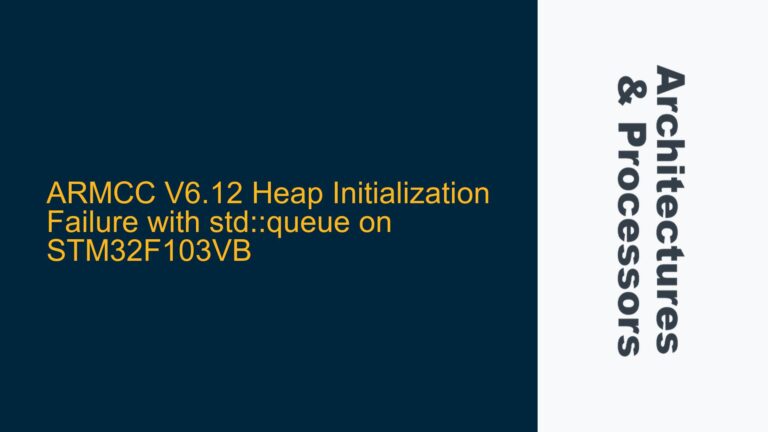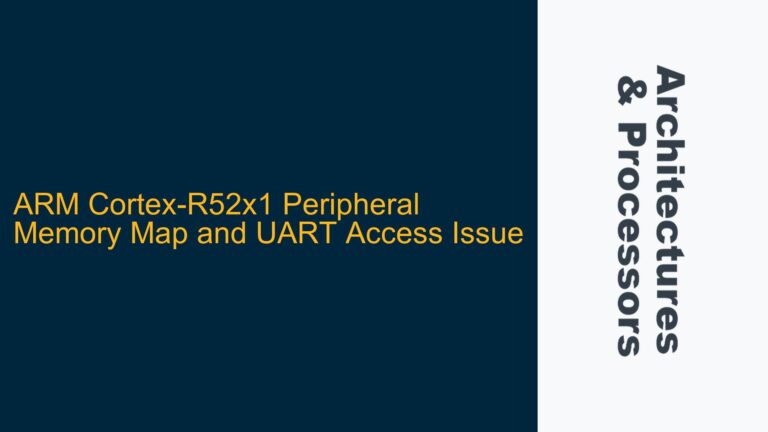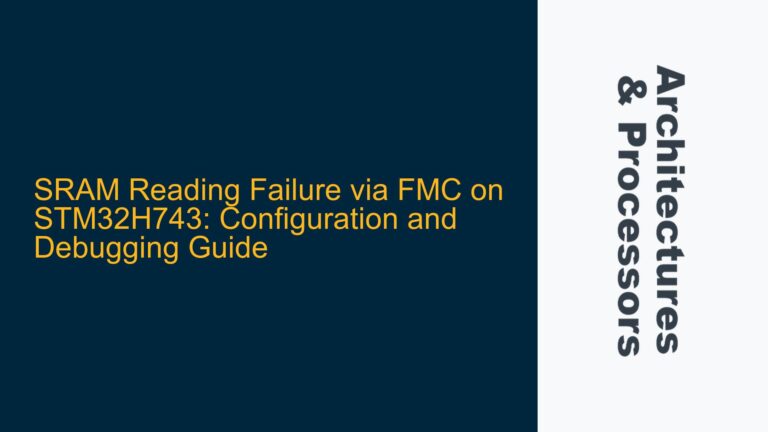ARM Cortex-M4 Core and DMA Interaction Without Hbusreq and Hgrant Ports
The ARM Cortex-M4 core, widely used in embedded systems, is designed for efficiency and low power consumption. However, unlike some other ARM cores, the Cortex-M4 does not include dedicated Hbusreq (bus request) and Hgrant (bus grant) ports for managing bus arbitration with other master devices such as DMA controllers. This absence can lead to confusion about how the Cortex-M4 interacts with other bus masters in a system. The Cortex-M4 relies on external components, such as an AHB (Advanced High-performance Bus) bus matrix or AHB master multiplexer, to handle arbitration and ensure proper communication between multiple bus masters.
The Cortex-M4 core communicates with peripherals and memory through the AHB and APB (Advanced Peripheral Bus) interfaces. The AHB is a high-performance bus that supports multiple masters, while the APB is optimized for lower-power peripheral access. When a DMA controller or another master device needs to access shared resources, such as memory or peripherals, the system must ensure that conflicts are resolved and data integrity is maintained. This is where the AHB bus matrix or AHB master multiplexer comes into play. These components act as intermediaries, managing access requests from multiple masters and ensuring that only one master has control of the bus at any given time.
The lack of Hbusreq and Hgrant ports on the Cortex-M4 does not limit its ability to work in multi-master systems. Instead, it shifts the responsibility of bus arbitration to external components. This design choice simplifies the Cortex-M4 core, making it more efficient for its target applications, while still allowing flexibility in system design. However, it also means that system designers must carefully configure and integrate these external arbitration components to ensure smooth operation.
AHB Bus Matrix and AHB Master Multiplexer: Key Components for Multi-Master Arbitration
The AHB bus matrix and AHB master multiplexer are critical components in systems where the Cortex-M4 core interacts with other master devices like DMA controllers. These components handle the arbitration process, ensuring that only one master can access the bus at a time. The AHB bus matrix is a more complex and flexible solution, allowing multiple masters to access multiple slaves simultaneously through different paths. This is particularly useful in systems with high data throughput requirements, where multiple masters may need to access different resources concurrently.
The AHB bus matrix consists of multiple layers, each capable of handling requests from different masters. It uses a priority-based arbitration scheme to determine which master gets access to the bus. The priority levels can be configured by the system designer, allowing for fine-tuned control over bus access. For example, a DMA controller handling real-time data transfer might be given higher priority than the Cortex-M4 core for certain memory accesses. This ensures that critical tasks are not delayed by lower-priority operations.
On the other hand, the AHB master multiplexer is a simpler component that allows multiple masters to share a single AHB bus. It uses a round-robin or fixed-priority arbitration scheme to grant access to the bus. While less flexible than the AHB bus matrix, the AHB master multiplexer is sufficient for many applications where the number of masters and slaves is limited, and concurrent access is not required.
Both the AHB bus matrix and AHB master multiplexer handle the arbitration process transparently to the Cortex-M4 core. The core does not need to be aware of the arbitration logic; it simply issues read and write requests through its AHB interface. The arbitration component ensures that these requests are serviced in the correct order, based on the configured priority levels. This abstraction simplifies software development, as the Cortex-M4 core can operate as if it has exclusive access to the bus.
Configuring and Debugging Multi-Master Systems with Cortex-M4 and DMA
When integrating the Cortex-M4 core with DMA controllers and other master devices, system designers must carefully configure the AHB bus matrix or AHB master multiplexer to ensure optimal performance and avoid conflicts. The first step is to define the priority levels for each master. High-priority masters, such as DMA controllers handling real-time data, should be given precedence over lower-priority masters like the Cortex-M4 core for non-critical tasks. This ensures that time-sensitive operations are not delayed.
Next, designers must configure the address decoding logic to ensure that each master can access the required resources. The AHB bus matrix or AHB master multiplexer uses address decoding to route requests from masters to the appropriate slaves. Misconfigurations in this area can lead to access violations or data corruption. For example, if two masters are configured to access the same memory region simultaneously, the arbitration component must ensure that only one master has access at a time.
Debugging multi-master systems can be challenging, especially when issues arise from bus contention or improper arbitration. One common issue is data corruption caused by simultaneous access to shared resources. To diagnose this, designers can use debug tools to monitor bus transactions and identify conflicts. ARM’s CoreSight debug architecture provides powerful tools for tracing bus activity and analyzing the behavior of the Cortex-M4 core and other masters.
Another potential issue is performance bottlenecks caused by inefficient arbitration. If a high-priority master is granted access to the bus too frequently, lower-priority masters may experience delays. To address this, designers can adjust the priority levels or use more sophisticated arbitration schemes, such as weighted round-robin, to ensure fair access to the bus.
In conclusion, the ARM Cortex-M4 core’s interaction with DMA controllers and other master devices relies on external arbitration components like the AHB bus matrix and AHB master multiplexer. These components handle the complex task of managing bus access, allowing the Cortex-M4 core to operate efficiently in multi-master systems. By carefully configuring and debugging these components, system designers can ensure reliable and high-performance operation in their embedded applications.
